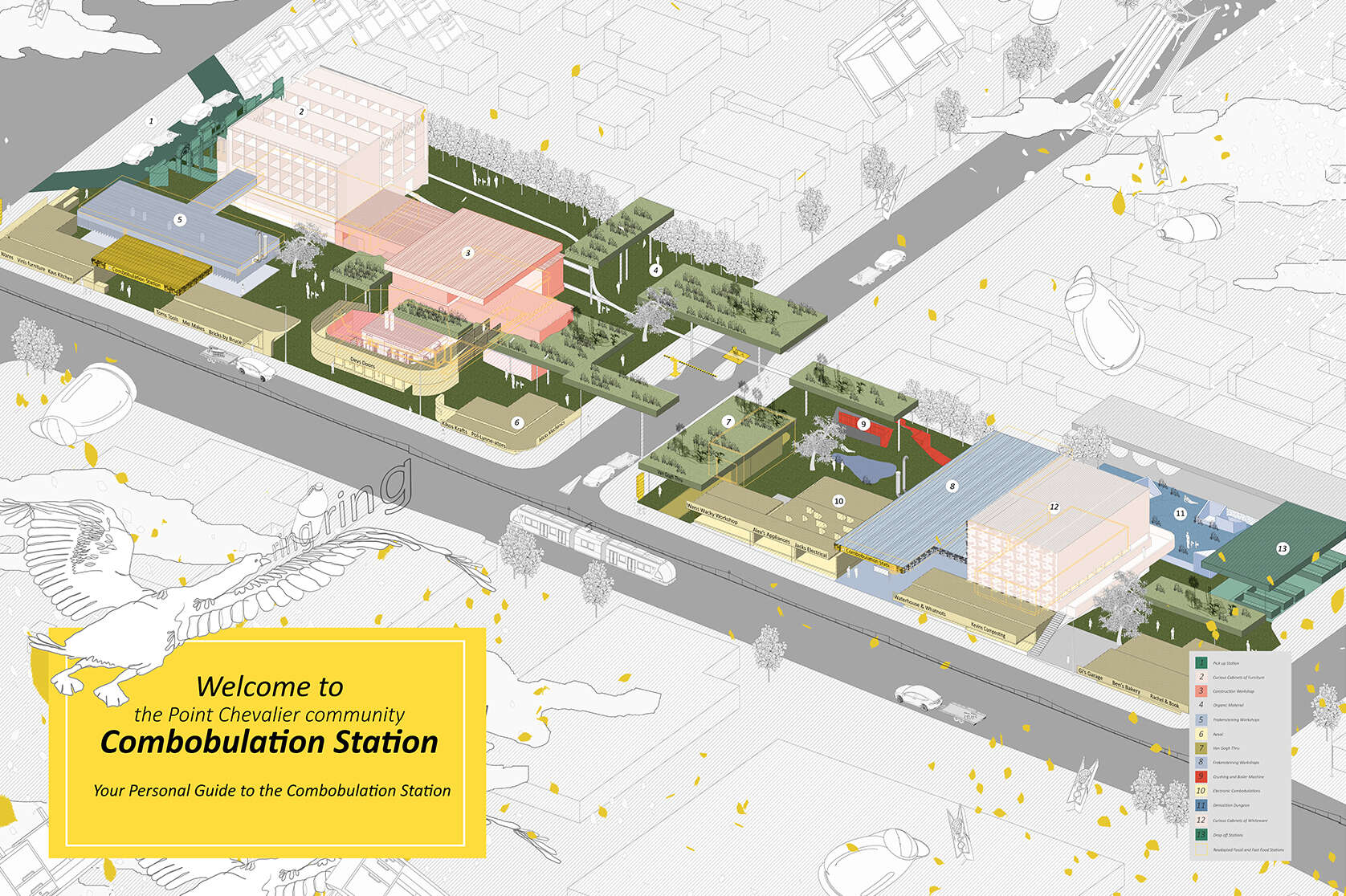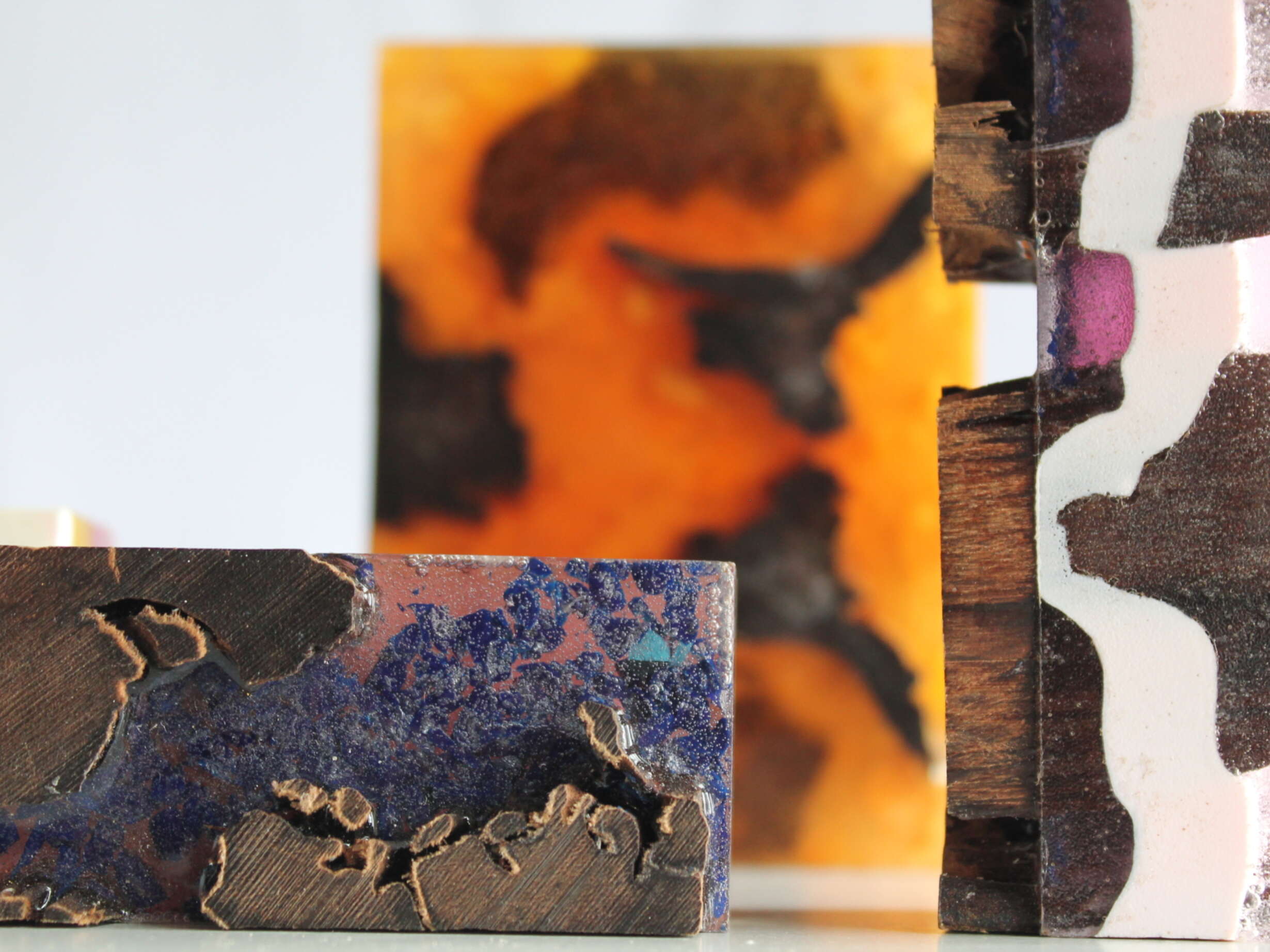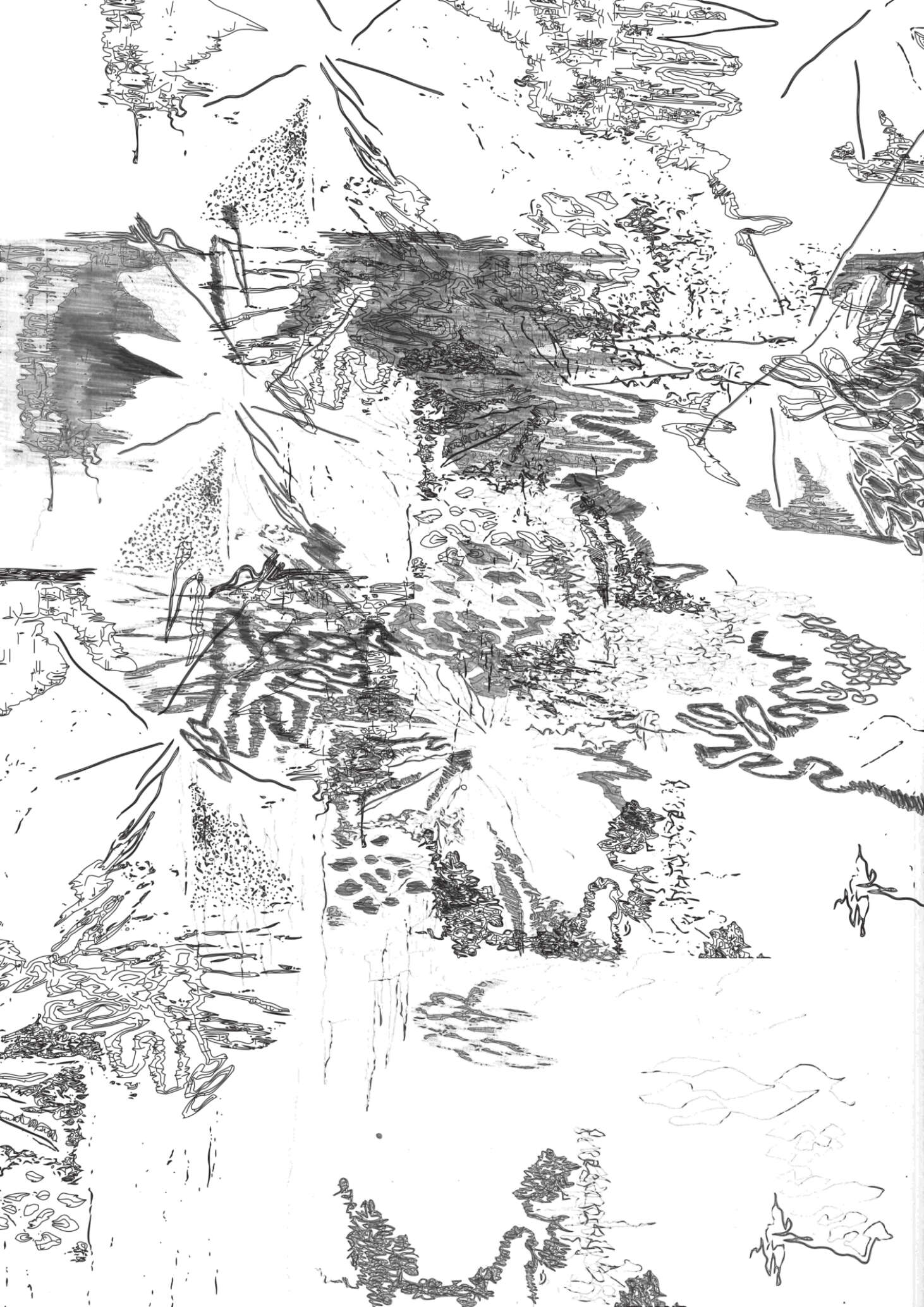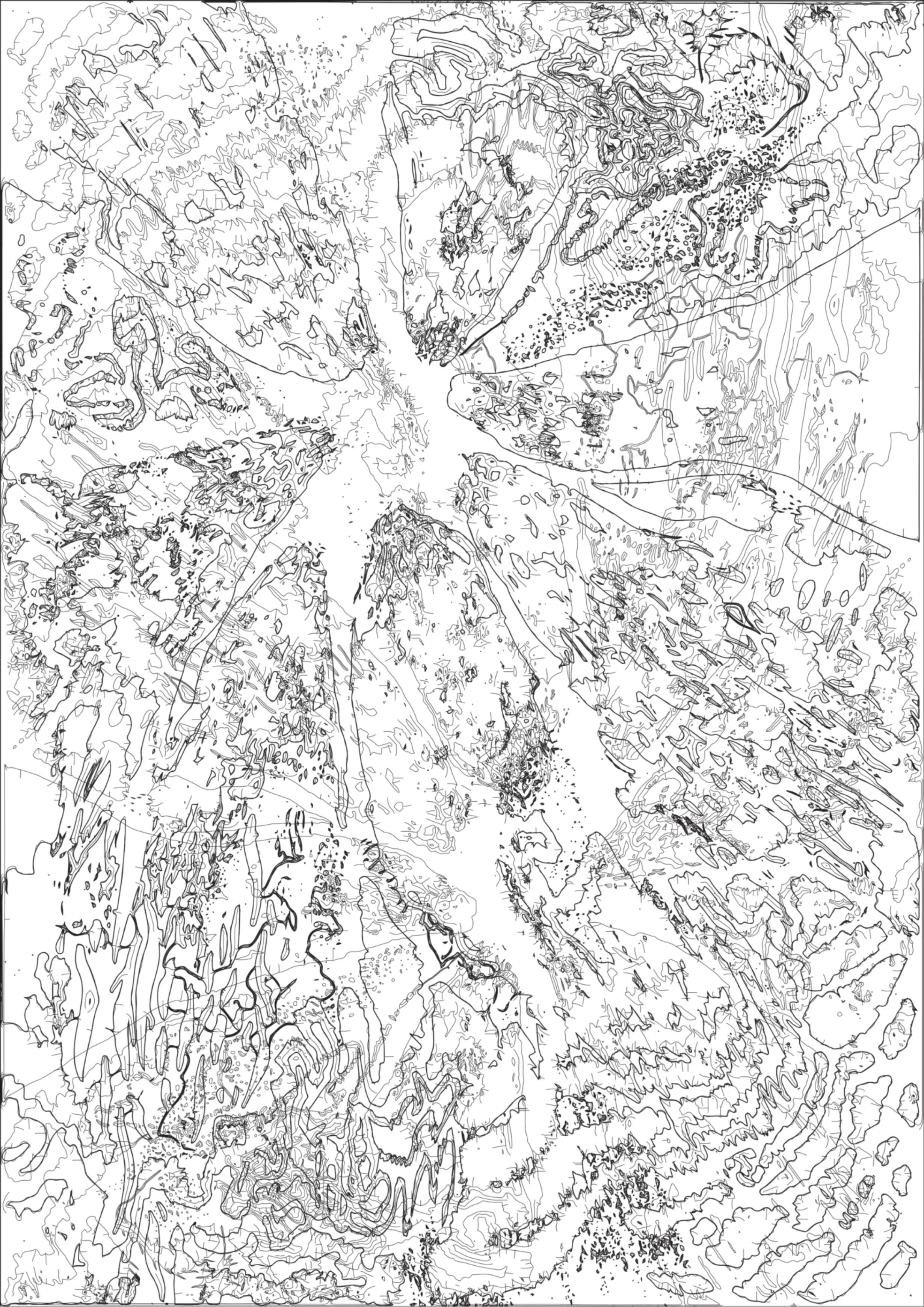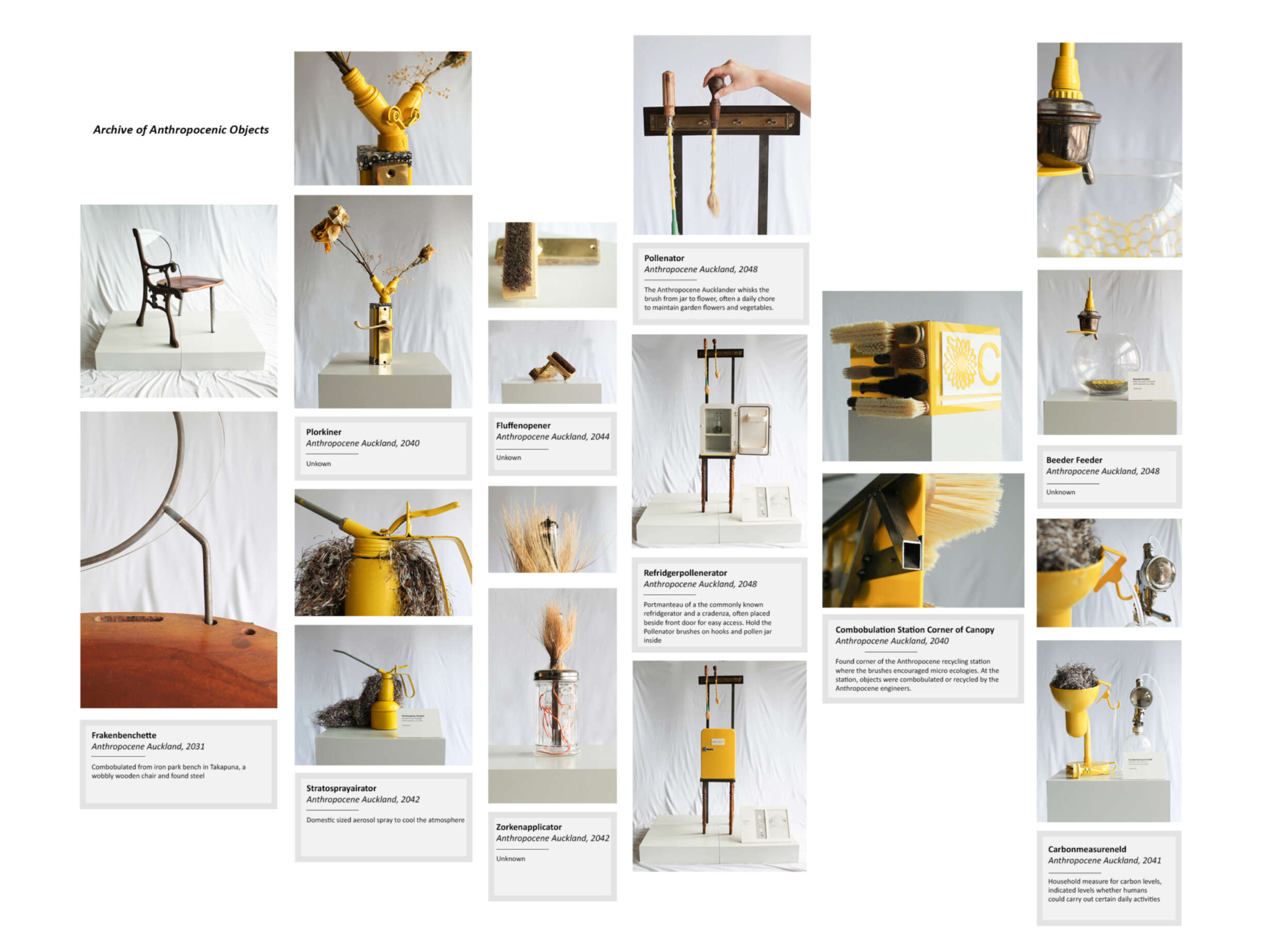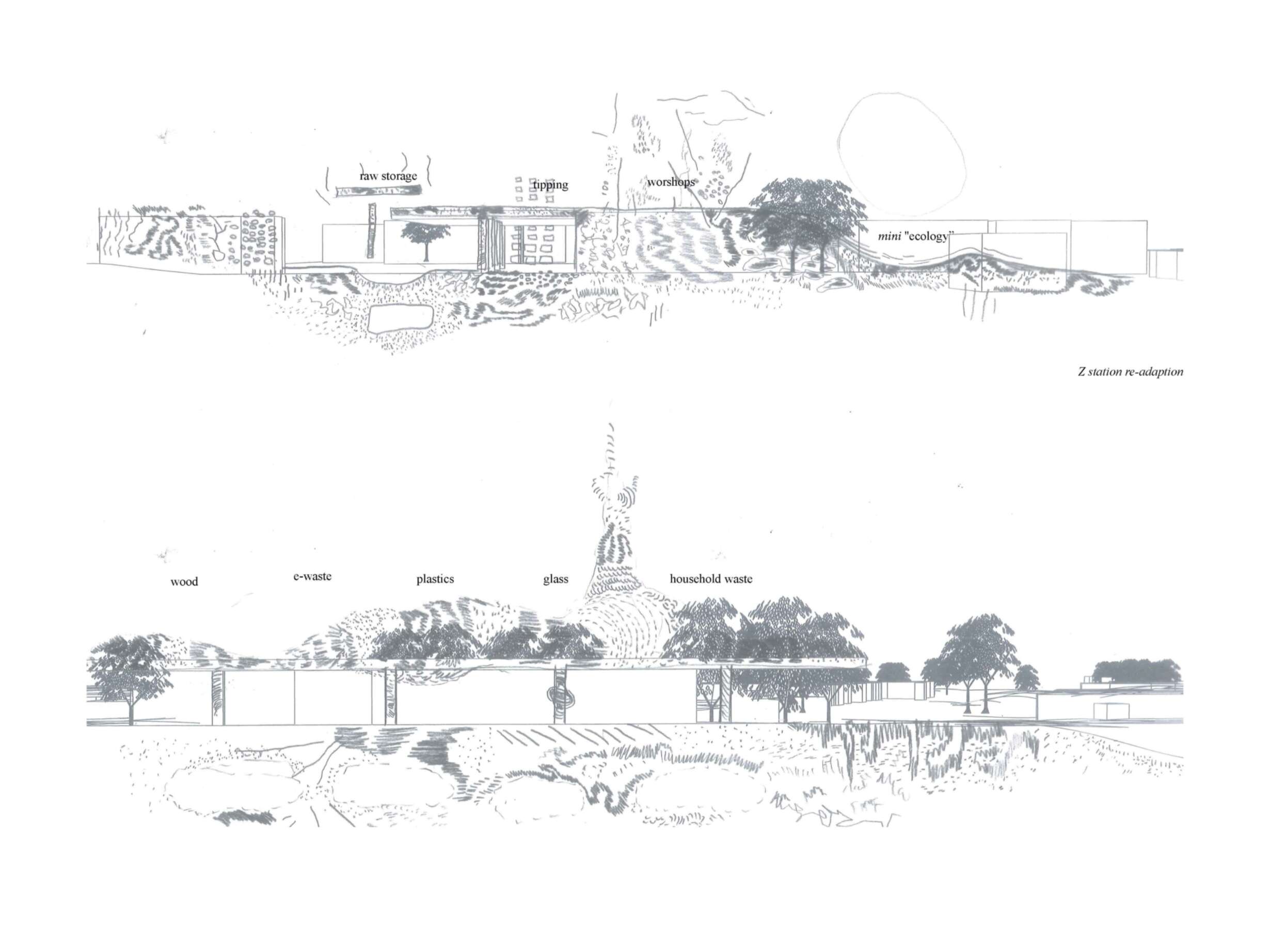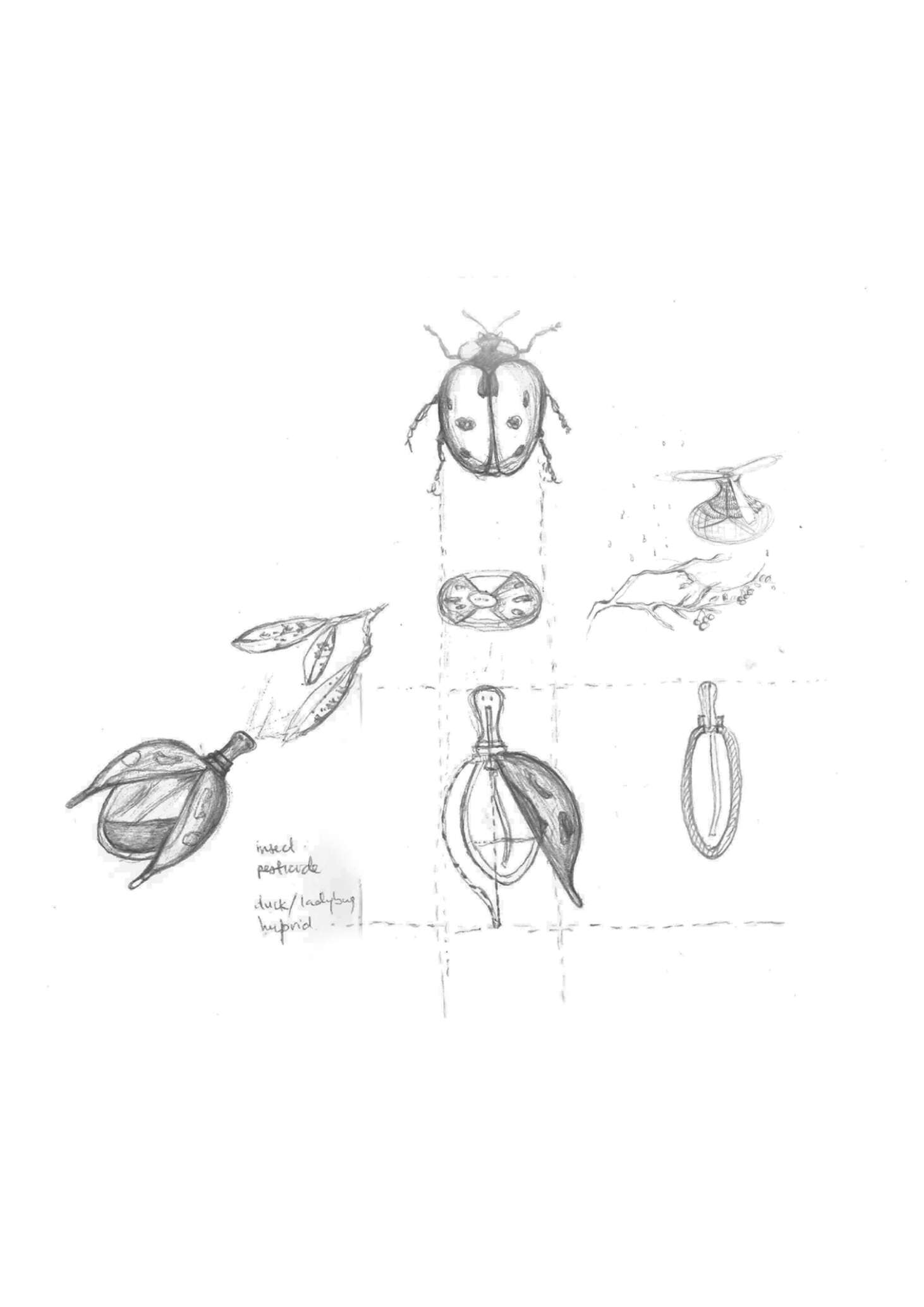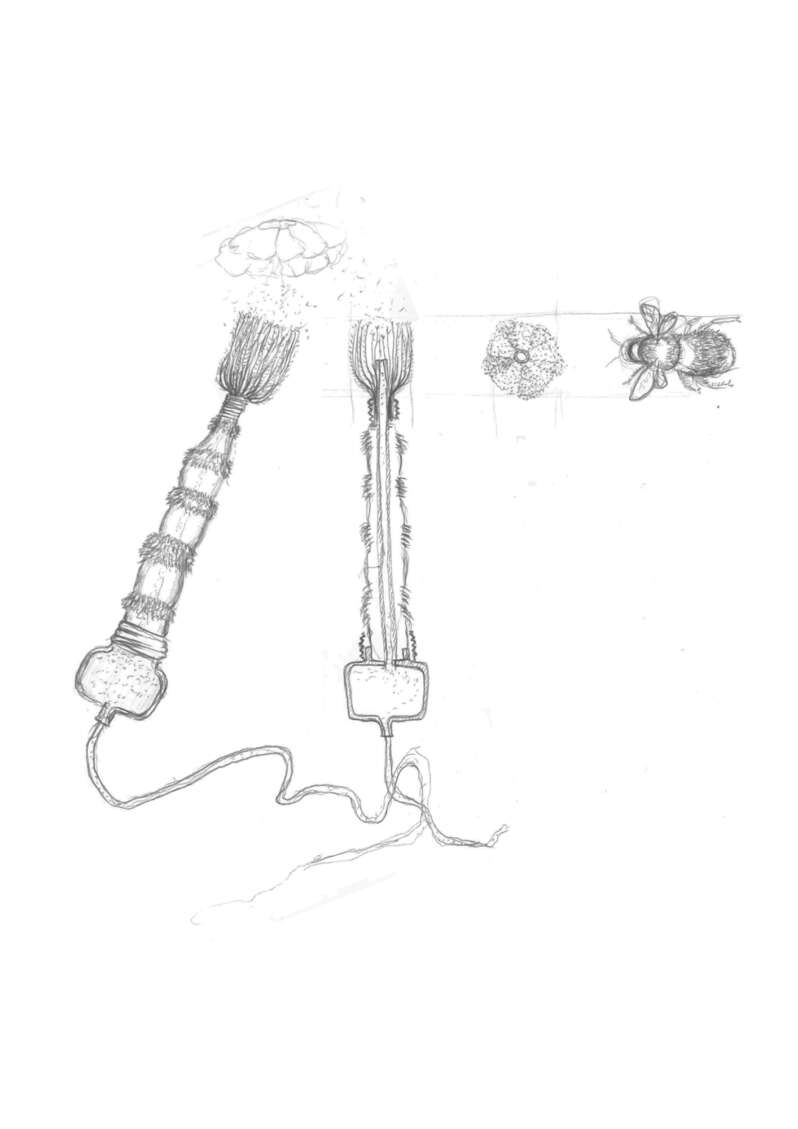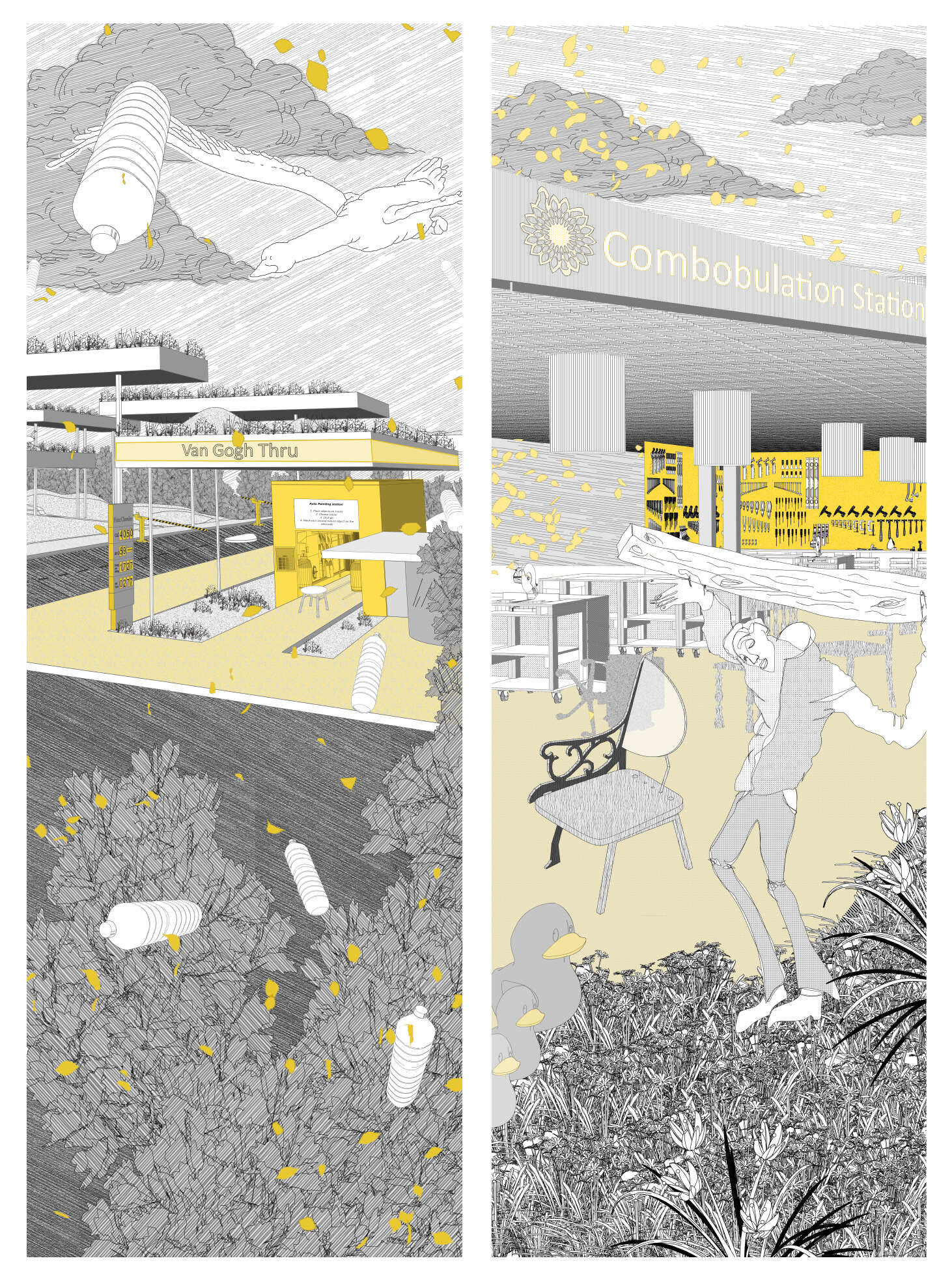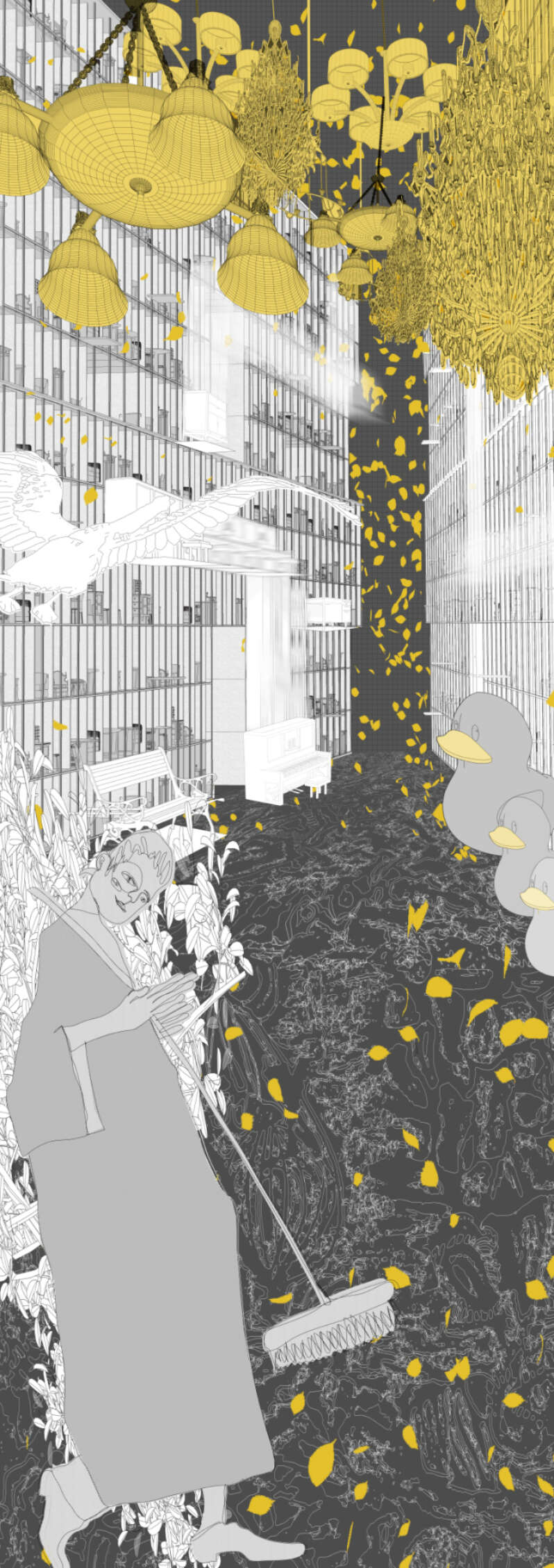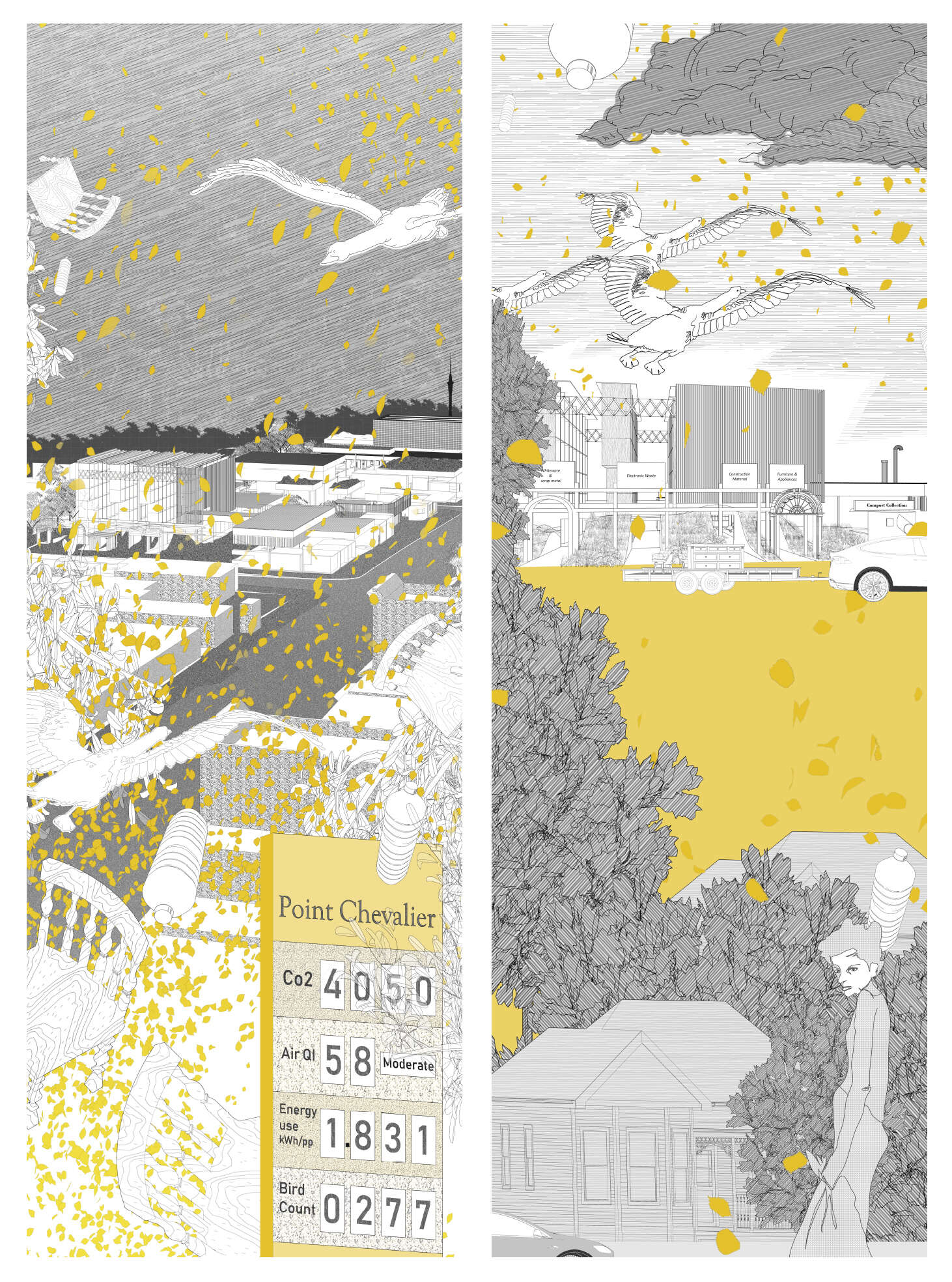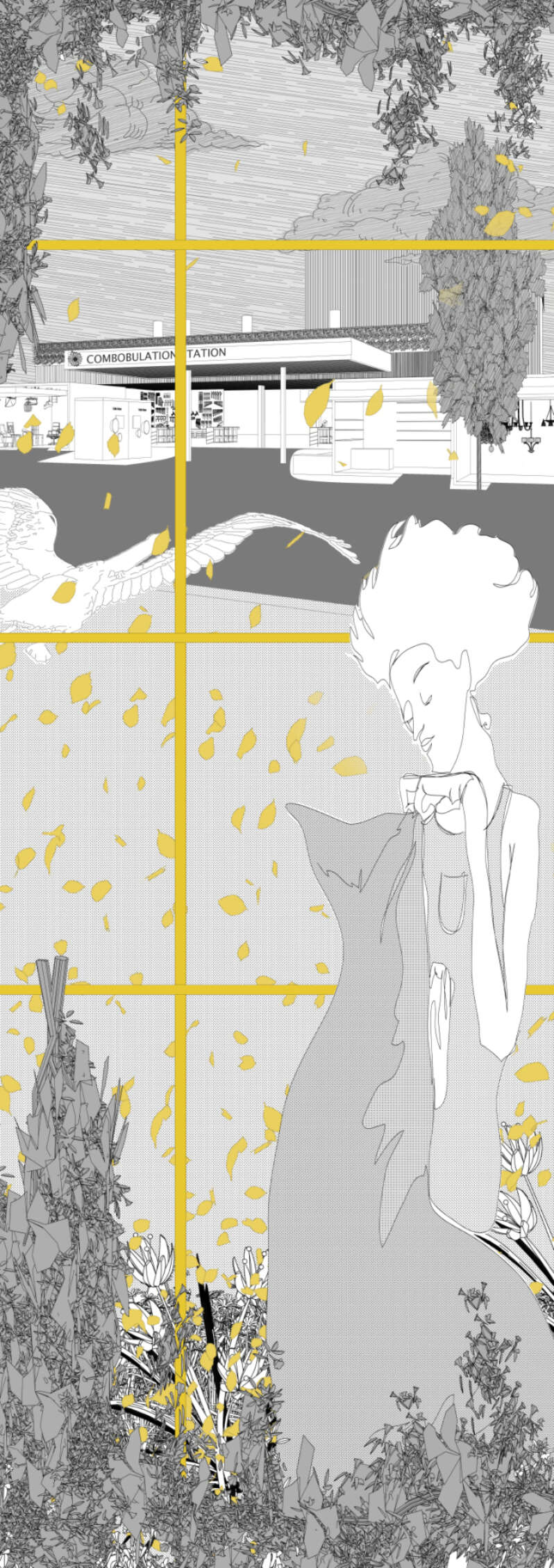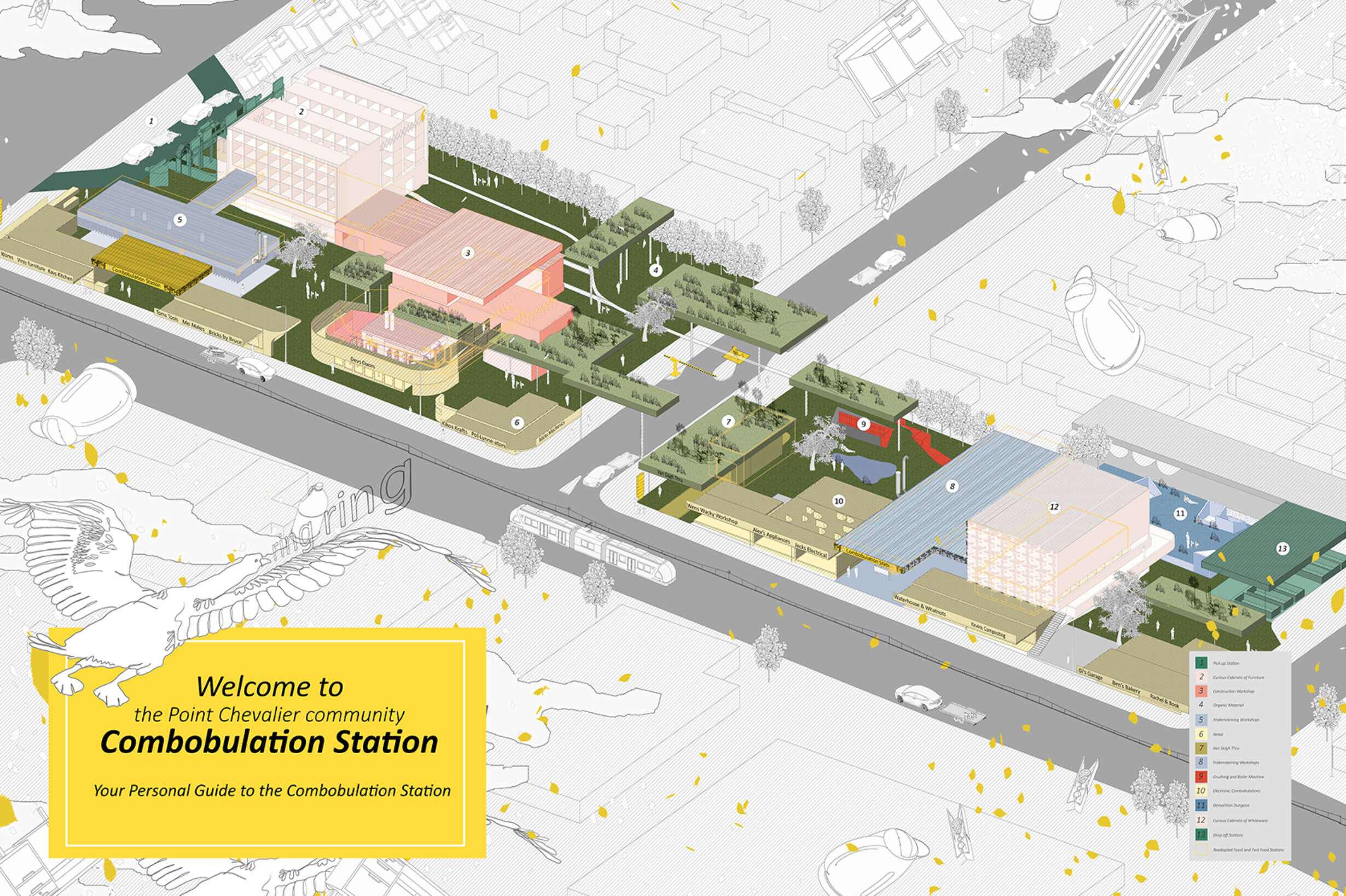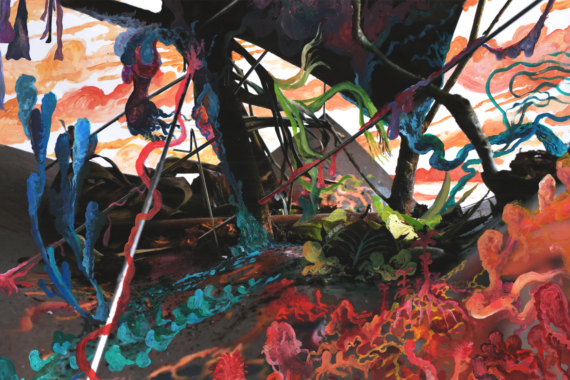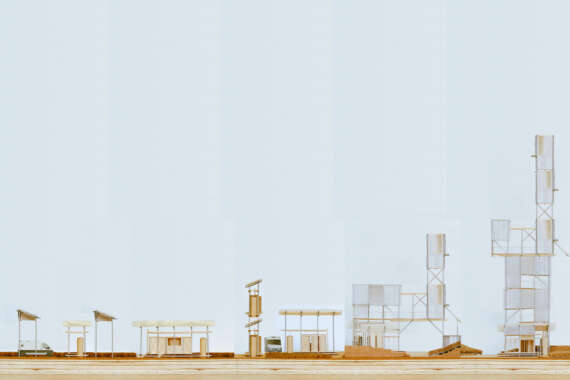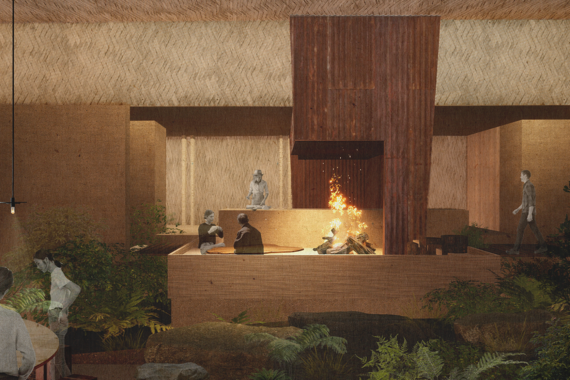I drew the concept of this thesis from the impending and surreal phenomena of the Anthropocene. An intersection of concepts: second nature, surrealism, objects as the extension of the human, the everyday and dysphoria respond to architecture's role in climate discourse.
The discombobulation and dysphoria which accompany climate change and its representations at overwhelming macro and micro scales - observed at the 2019 climate strikes and other cultural responses - drives a search for new climate representation in architecture. This resulted in a series of drawing and model explorations of various mediums where elements repelling and intersecting were a cognitive process for understanding emotional responses beyond the nostalgias of the environment. Media and representation are essential modes of storytelling for communicating cognitive and tangible notions.
Parallel to this, an investigation and revival of Andre Breton's conception of the surrealist movement as a new representation for climate change, where an orientation to the everyday informs the sur-realities within the environment. Devoid of stylistic fads and grand utopian or dystopian displays, an uncanny everyday reality is employed as a tool reflection on climate change discourse. Henry Lefebvre expresses, "Banality? Why should the study of the banal itself be banal? Are not the surreal, the extraordinary, the surprising, even the magical, also part of the real? Why wouldn't the concept of everydayness reveal the extraordinary in the ordinary?"
The exploration of objects initiated the idea that human relationships with them foster more than their superficial instrumental value, and can instigate with intrinsic value the emotional interconnectedness to our daily lives. Surreal object models in this project are a tool to integrate the ecological subconsciousness into a more tangible consciousness. Objects through history have given us glimpses of our human behaviour, socio-cultural patterns and the surreal models explored to describe the potential of the uncanny habits in the Anthropocene.
